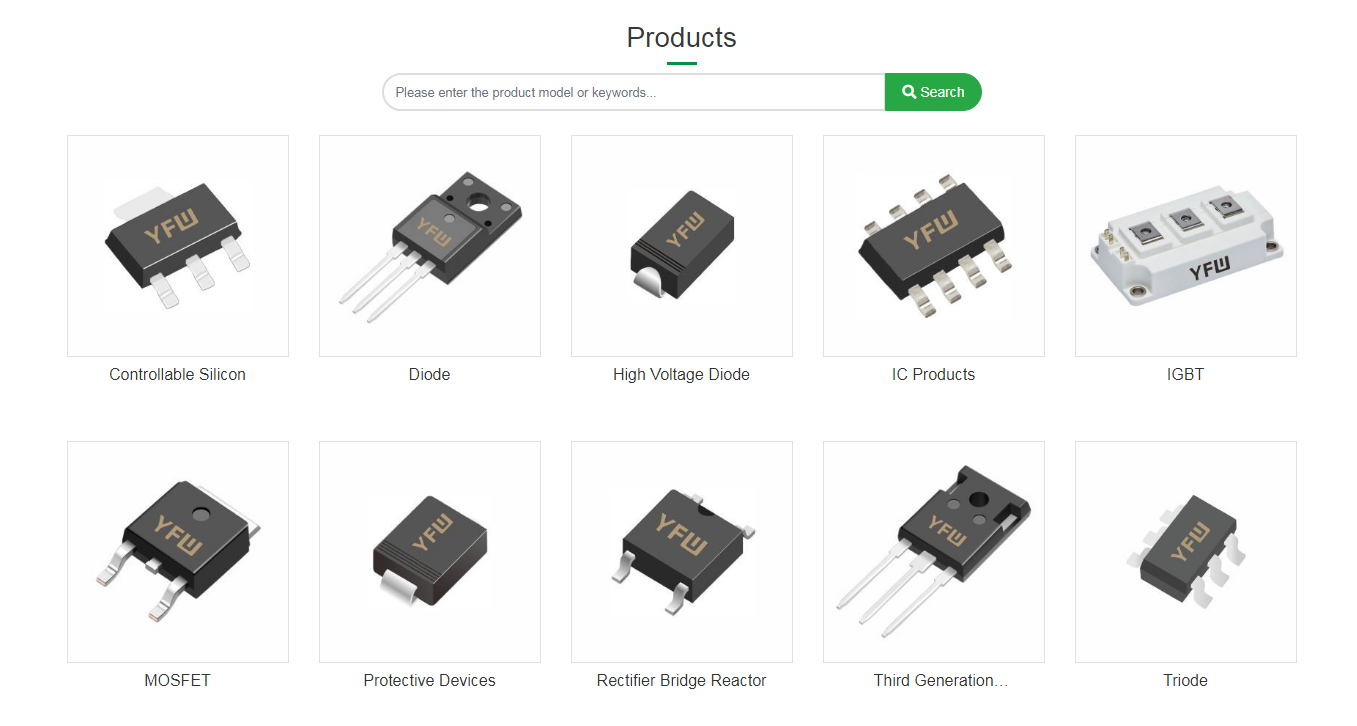Date:2025-03-18 Categories:Industry News Hits:893 From:Guangdong Youfeng Microelectronics Co., Ltd(YFW)
A PIN photodiode is a photoelectric conversion device that can convert optical signals into electrical signals. It has the advantages of simple structure, sensitivity, and fast response, and is widely used in optical communication, photoelectric detection, object recognition, and other fields. I. Structure: A PIN photodiode of three regions: a P-type semiconductor, an intrinsic layer (I region), and an N-type semiconductor. Typically, the P-type and N-type semiconors are highly doped, while the intrinsic layer is lightly doped. The three regions form a PN junction, with the intrinsic layer being a non-doped layer between the doped layers. II. Advantages and disadvantages: Advantages: 1. High sensitivity: The fixed layer of the PIN photodiode can enhance the efficiency of capture for electrons and holes, thereby improving the photoelectric conversion efficiency. 2. Fast response speed: The PIN photodiode has low capacitance and resistance, allowing it to respond to changes in optical signals. 3. Wide band characteristics: The frequency response range of the PIN photodiode is wide, making it suitable for receiving high-frequency. 4. Low noise: The noise level of the PIN photodiode is low, providing a high signal-to-noise ratio output signal. Disadvantages: . Relatively high operating voltage: PIN photodiodes require a higher operating voltage to work properly. 2. Temperature sensitivity: The performance of PIN photodiodes easily affected by temperature. III. Working principle: The working principle of a PIN photodiode is to enhance the photoelectric conversion effect by using the built-in electric. When light shines on the N-type semiconductor region of the PIN photodiode, photons can excite electrons from the valence band to the conduction band, generating a current. to the presence of the built-in electric field, electrons can be quickly collected in the P-type semiconductor region, thus forming an output current. The strength and direction of the-in electric field can be regulated by an external power source to change the photoelectric conversion effect. IV. Application: 1. Optical communication: PIN photodiod can be used as receivers in fiber optic communication, converting optical signals into electrical signals. 2. Optical measurement: PIN photodiodes can be used to measure changes light intensity, such as spectral analysis and light intensity detection. 3. Photoelectric detection: PIN photodiodes can be used in photoelectric detectors, such as infrared detectors photoelectric gates. V. Installation: The installation of a PIN photodiode usually needs to consider the following aspects: 1. Temperature: Try to avoid high and temperature environments to prevent affecting the performance of the PIN photodiode. 2. Light: Avoid direct exposure to strong light to prevent damage to the PIN photodiode. . Circuit connection: Connect the PIN photodiode's circuit correctly to ensure the normal transmission of signals. 4. Mechanical fixation: You can use appropriate mechanical fixation to fix the PIN photodiode in a suitable position to ensure its stability and reliability. VI. Common faults and preventive measures: Due to its special structure and working, it will also have some common faults. The following are common faults and preventive measures for PIN photodiodes: 1. Decreased sensitivity of the photodiode: sensitivity of the photodiode may decrease due to long-term use or environmental factors. To prevent this from happening, regular maintenance of the photodiode can be carried out

Previous:Definition and waveform introduction of power diode dynamic process
Next:NZT560A 1A 80V SOT-223 Marked NZT560A Small Signal Transistor Y Micro Brand